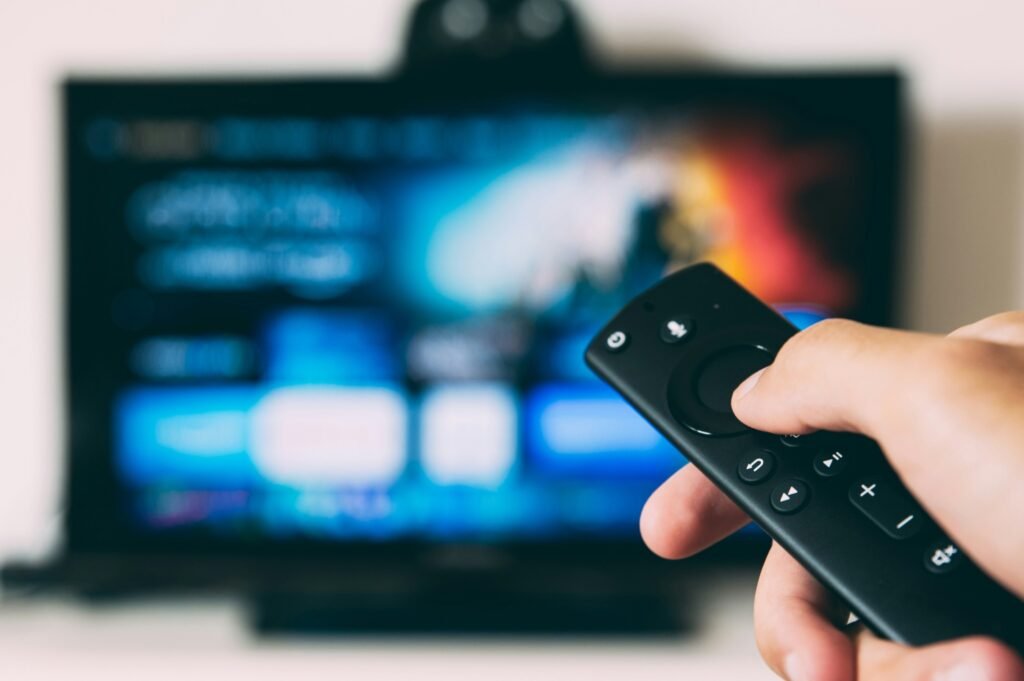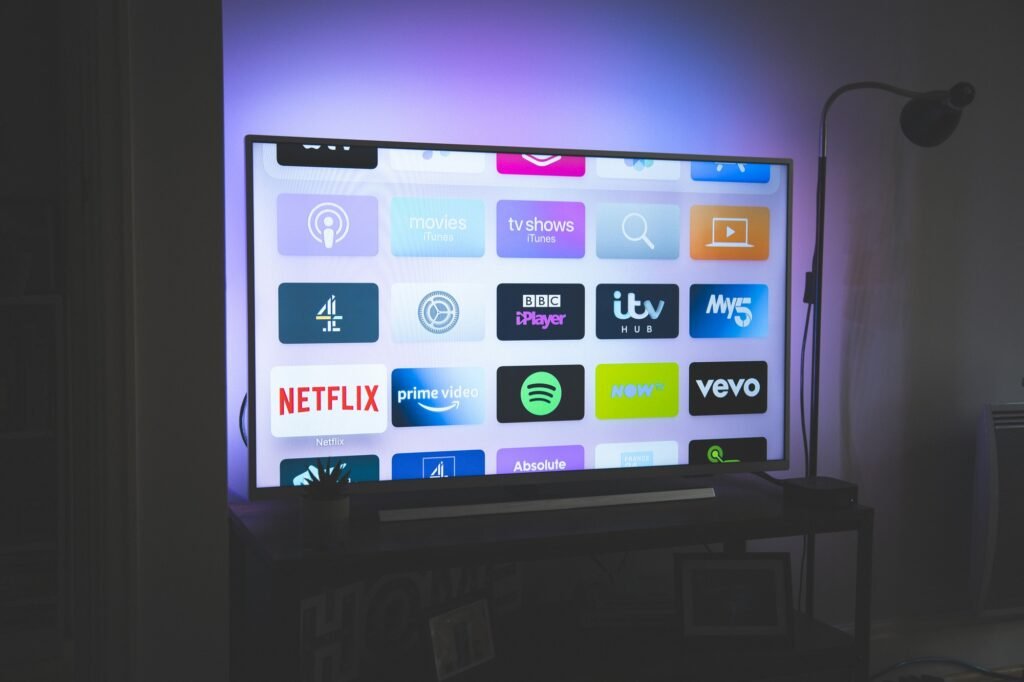When budgeting for a new TV, few people budget for the additional costs that will invariably come with the TV. The TV makers don’t want you (and the rest of Tech India) to realize or remember this, but you really should.

The Hidden Cost of Modern Entertainment
You’ve seen it. That gorgeous 65-inch OLED TV with perfect blacks and vibrant colors, now on sale for “just” 54,999/-. What a deal! But before you swipe that credit card, let me tell you about the financial rabbit hole I tumbled down after my own “bargain” purchase. The sticker price you see is merely the cover charge to a much more expensive party.
My 54,999/- TV That Cost Me Much More
This happened two years ago when I still watched Netflix. After years of watching Netflix and YouTube Premium on my decade-old 32-inch 1080p LCD TV, I decided it was time for an upgrade. The deals were too good to pass up—a beautiful 65-inch 4K OLED for 54,999/-, marked down from 59,999/-. What a steal, right?
As soon as I setup my new technological marvel, I get a notification Netflix:
“Enhance your viewing experience! Your new device supports Ultra HD. Upgrade to our Premium plan to enjoy crystal-clear 4K resolution.”
Or something like the above.
From this point on, I switch from INR to USD to facilitate more comprehensive comparison across prices.
The difference between my Standard plan ($15.49/month) and the Premium tier ($19.99/month) was only $4.50 per month. Practically nothing compared to what I’d just spent on the TV itself. So I upgraded.
Then came Disney+, which I hadn’t subscribed to before. But with this gorgeous screen, how could I miss out on watching Marvel and Star Wars in 4K? That’s another $7.99/month. Or at the time, $249 a year.
A month later, I found myself staring at PlayStation 5 advertisements. I haven’t owned a PlayStation since the PS1 (yes I’m reasonably old I guess). My Nintendo Switch suddenly seemed inadequate next to my stunning new TV. The PS5 would take full advantage of the TV’s capabilities with 4K gaming at 120Hz. At $499 for the console and $70 per game, I was looking at another $700+ expense.
By the six-month mark, here’s what my “affordable” 54,999/- TV had actually cost me in USD:
- TV: $649 (ish)
- Premium streaming upgrades: $30/month × 6 months = $180
- New streaming services: $15/month × 6 months = $90
- PlayStation 5: $499
- Three PS5 games: $210
- HDMI 2.1 cables: $45
- Soundbar (because the TV’s speakers suddenly seemed inadequate): $350
- New entertainment center to fit everything: $400
Total: $2,454 ish.
My $649 TV had nearly tripled in cost, and that’s just in the first six months.
The Ecosystem Effect: It’s Not Just TVs
This phenomenon isn’t limited to televisions. Let’s look at some other common devices and their hidden costs:
Smartphones
When you buy that shiny new iPhone 15 Pro for $999, you’re also likely to spend on:
- AppleCare+: $199 for two years
- iCloud+ storage: $2.99-$9.99/month
- New case and screen protector: $50-100
- Wireless charger: $30-60
- AirPods or other compatible accessories: $129-549
That’s assuming you don’t immediately go for the spec bumps / configuration that Apple is so good at getting out of you.
According to a 2023 CNBC report, the average smartphone user spends approximately $88 per month on apps and services connected to their device. Over a typical three-year phone lifespan, that’s an additional $3,168 on top of the device cost.
Smart Home Devices
That $99 Amazon Echo or Google Nest Hub? It’s a gateway to:
- Music subscription services: $9.99-$19.99/month
- Smart light bulbs: $25-60 each
- Smart plugs: $15-35 each
- Security cameras: $100-300 each
- Premium features and cloud storage: $5-15/month
Research from Parks Associates shows that households with smart home devices spend an average of $250 annually on related services and add-on products.
The Subscription Economy

The shift toward subscription-based models has been dramatic. According to Zuora’s Subscription Economy Index, subscription-based businesses have grown revenues approximately 5 times faster than S&P 500 company revenues and U.S. retail sales from 2012 to 2023.
For technology companies, this model is brilliantly profitable. The initial hardware sale is just the beginning of a long-term revenue relationship. In 2022, Apple reported that its services revenue (including subscriptions like Apple TV+, Apple Music, and iCloud) reached $78.1 billion—nearly a quarter of its total revenue. This is crazy considering that Apple makes and sells phones, tablets, laptops, and more!
The Hidden Environmental Cost
Beyond the financial impact, there’s also an environmental consideration. The ecosystem of devices surrounding our main purchases leads to increased energy consumption and electronic waste.
I keep talking about this in most of my posts because I really believe we need to think more about e-waste collectively as a society.
According to the Global E-waste Monitor, approximately 53.6 million metric tons of electronic waste was generated worldwide in 2019, and only 17.4% was formally collected and recycled. Each additional device we purchase contributes to this growing problem.
Smart Budgeting Principles for Tech Purchases
Before you make your next tech purchase, consider these principles to avoid spending far more than you intended:
1. Calculate the Total Cost of Ownership (TCO)
Don’t just look at the sticker price. Consider:
- Required accessories
- Subscription services
- Extended warranties
- Anticipated upgrades
- Energy costs
2. Implement a “Waiting Period” Rule
For every $100 a device costs, wait one day before purchasing. This gives you time to research hidden costs and determine if you really need the upgrade.
3. Audit Your Current Subscriptions
Before adding new services, review what you’re already paying for. Are you using all your current subscriptions? Could you rotate services instead of maintaining them all simultaneously?
4. Distinguish Between Needs and Wants
Ask yourself:
- What problem does this new device solve?
- Could my current device be repaired instead of replaced?
- Am I buying this for the features or for the status?
5. Research Compatibility with Existing Devices
Before purchasing, verify whether the new device will work with your current setup or if it will require additional purchases to function optimally.
6. Budget for the Ecosystem, Not Just the Device
When planning a major tech purchase, set aside 40-50% of the device cost for accessories and services. If you’re spending $1,000 on a TV, budget an additional $400-500 for the surrounding ecosystem.
7. Consider Previous Generation Models
Last year’s model often offers 90% of the features at 70% of the price, and may still be compatible with your existing accessories.
Conclusion: The True Value Proposition
As consumer technology becomes increasingly interconnected, the true cost of our devices extends far beyond the initial purchase price. The television, smartphone, or smart speaker is merely the gateway to an expansive ecosystem designed to extract ongoing revenue.
This isn’t to say that technology upgrades aren’t worthwhile—they certainly can be. The key is to approach these purchases with full awareness of the complete financial commitment they represent.
As Warren Buffett wisely stated, “Price is what you pay. Value is what you get.” When it comes to modern technology, understanding the full price enables us to make informed decisions about the true value we receive.
The next time you’re tempted by that discounted TV or the latest smartphone, remember: the price tag is just the beginning of the story. The real cost will unfold over months and years as you build out the ecosystem around your new digital hub.
Make your technology purchases with eyes wide open, and your wallet will thank you.
Thanks for reading! I am a self-proclaimed technology consumer behavior analyst and founder of TechINForm . I write to help readers make informed decisions about their technology investments, especially in India.
Find me on your favorite social media platform as @tech_in_form
